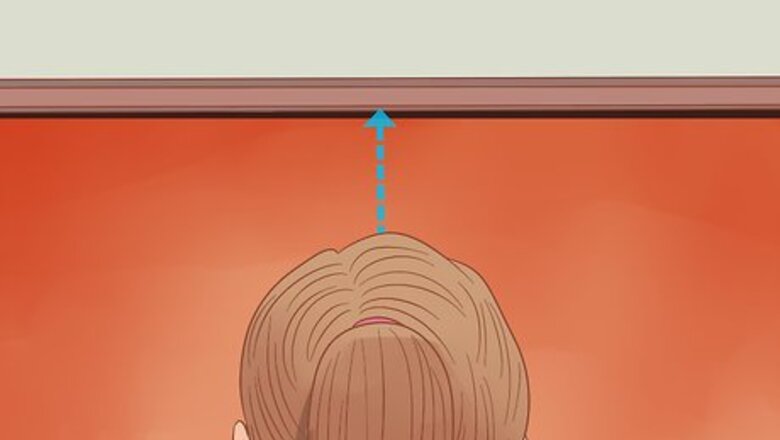
views
Practicing a Cartwheel
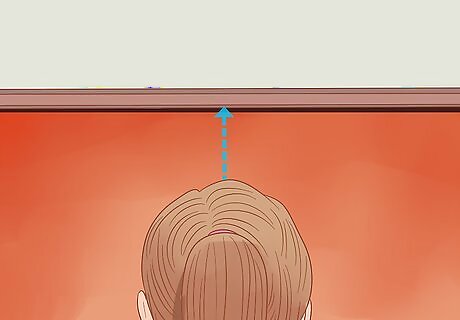
Picture an imaginary line extending straight in front of you. Use this line as a guide while you perform your cartwheel. You can even use painter’s tape to create a real line across a carpet or a mat. This line should be at least several feet long. Try to stay on the line, as if the line is a balance beam. But do not focus on just the line. Focus on form too. Make sure the area around your line is free and clear. Avoid practicing cartwheels near walls or pieces of furniture that you might run into. Injuries occur when you bump into something hard.
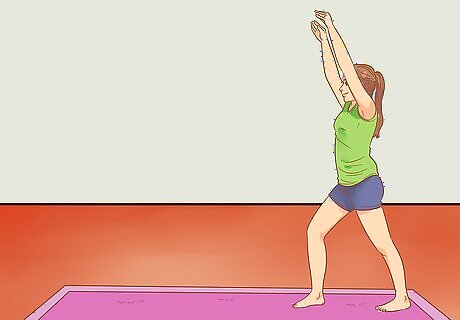
Lunge forward with your lead leg and raise your arms. Slightly bend your front leg at the knee and keep your back leg straight. Keep both feet pointing forward parallel to your imaginary line. Hold your arms straight up by your ears. A common mistake is to start a cartwheel while facing sideways. Make sure you’re facing forwards as you prepare and start for your cartwheel. That is the correct way. Either leg can be your lead leg. Sometimes, however, it's more comfortable to use one leg instead of the other—you can try to figure out which one by doing a series of handstands, some starting with your right leg in front, others with your left. Whichever leading leg feels more natural is the one you should use for your cartwheel.You can determine your leading by watching which leg in splits feels more comfortable.
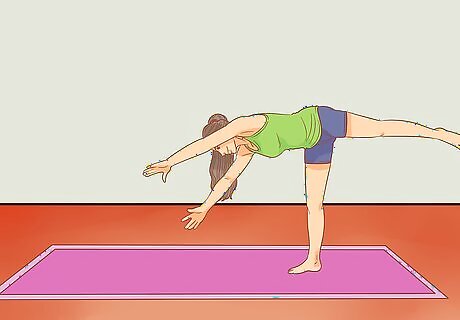
Lower your arms towards the ground while raising your back leg. Keep your arms straight by your ears as you lower them down to bring your head and torso down as well. Only lower your arms about halfway to the ground. Bring your back leg up while keeping it straight so your body forms a “T” shape. This step requires balance. You may need to drop your leg several times before you find a balanced position you can hold. Don’t worry if you’re having trouble balancing. Once you get the hang of the cartwheel, you won’t have to hold this position for very long since it will all become one continuous and natural movement.
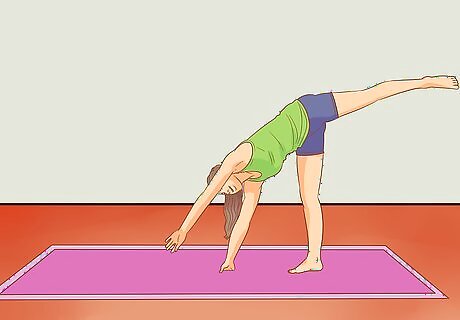
Place your hands on the mat as you turn your body sideways. Put down the arm on the same side of your body as your lead leg first. Then put your other arm down so they're spread about shoulder width apart, similar to the way they would be positioned for a handstand. Place both hands along the imaginary line. Think "hand hand feet" to help you process the cartwheel. For example, if you lunged with your right leg, place your right hand down first, then your left hand. Keep the fingers of each hand pointing away from your head.
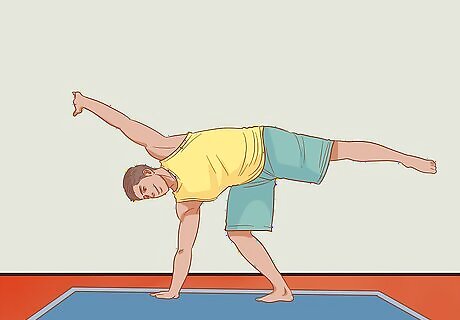
Push off on your front leg, then bring your legs up in a V shape. Straighten your front leg as you push so your legs end up in the air, pointing straight upwards. Balance your weight on your arms with your hands shoulder-width apart on either side of your head. Keep your head and torso upside down and positioned directly over your arms. Use your shoulders and core for support. You won’t hold this position for long. Cartwheels should be performed in one fluid motion. Make sure to keep your legs straight the whole time. If you are a beginner, then you may want to practice more.
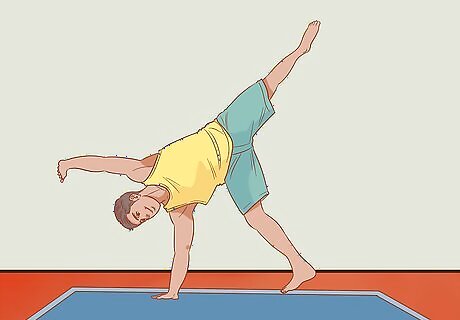
Lower your lead leg as you lift the first hand you put down off the mat. To complete the cartwheel, put your leading leg down first along your imaginary line. The first hand you placed on the mat will lift up naturally as your foot comes down. Bring your arm up by your ear to finish the cartwheel. Your weight should start to shift onto your legs. Keep your head and torso roughly parallel to the mat.
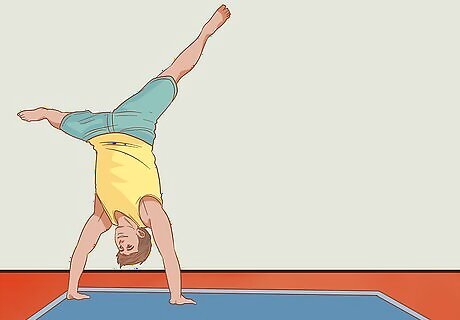
Bring your other leg down while lifting your other hand off the mat. Your other leg will follow the first as it comes down. Make sure to place your back foot behind your leading foot along the same imaginary line so both feet point back in the direction you came from. Your second hand will lift naturally off the mat, following the first hand. At this point, both your head and torso should be right side up, centered over your legs. A common mistake while cartwheeling is leaving your hands on the ground for too long. Make sure that your arms stay straight and by your ears as your chest and head come up at the end of the cartwheel.
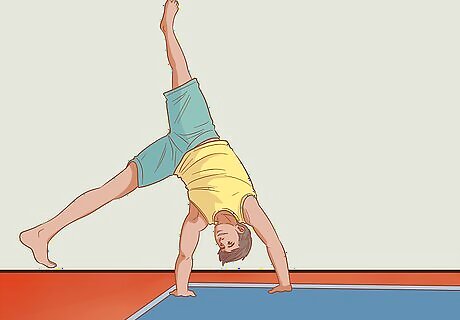
Land in a lunge facing in the opposite direction. Position yourself so your original back leg is in front and slightly bent, while your original leading leg is behind you and straight, just like a lunge. Keep both feet pointing in the direction you came from. Make sure your arms are straight and pointing upwards, next to your ears. Position your torso in the same direction your feet are pointing.
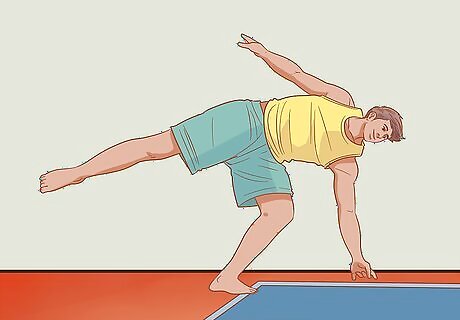
Keep practicing until the movements feel comfortable. Continue to practice your cartwheel, alternating back and forth between leading legs, until you get the hang of it. It may take some time, so don't give up! The form will not matter at first, as long as you are supporting yourself in the air with your handstand getting the hang of it, it's a cartwheel! Just remember to get the form once you can do it in a fluid motion. One direction may be easier than the other for you—most people have a dominant leg. But practice both to get comfortable cartwheeling on either side. Pick one side you would like to do first. If you start to get dizzy or lightheaded at any point, take a break and wait for the feeling to pass before resuming cartwheeling. Stay confident while doing cartwheels since it can be really easy to psych yourself out.
Creating a Practice Space and Limbering Up
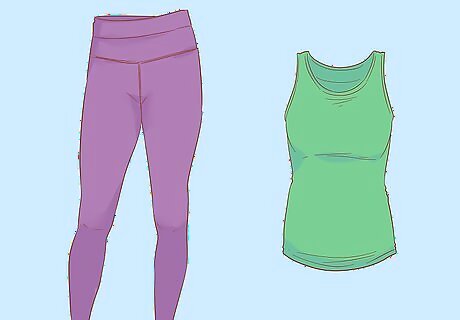
Put on comfortable, flexible clothing. To practice cartwheeling, wear clothing that allows a full range of movement for your arms and legs. Compression clothing, yoga clothing, and gymnastic leotards are all great choices. Sports clothes are great too. Avoid non-stretchy fabrics like denim. Avoid skirts and dresses as well, which will flip over during the cartwheel. Workout or gym clothes, including leggings and fitted tanks, are a great option. If you’re practicing on a mat, do not wear socks, which can be slippery and cause you to fall.
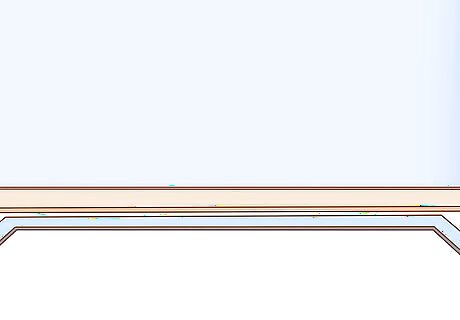
Find an open environment with a soft floor covering. Find a space that is free of furniture or other objects. It’s best to practice on a soft surface, such as carpet, a lawn, or a gymnastics mat. If you are not a beginner, you can practice on a gym floor, or something harder. If you’re practicing outside, make sure the area you’ve chosen is flat and level. It will be hard to cartwheel over bumpy ground. Also make sure to check for rocks or gravel that might be hiding in the grass—these will hurt your hands during a cartwheel.
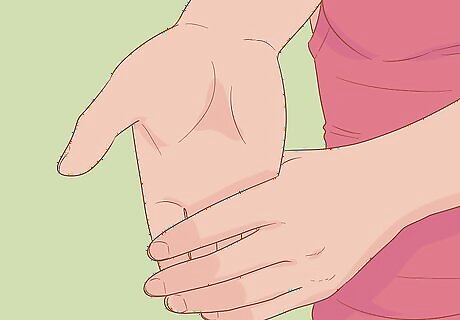
Stretch out your wrists and hamstrings. Stretching your body before you begin will keep you from injuring yourself while practicing cartwheels. Bend your wrists back and forth gently to loosen the muscles. Stretch out your hamstrings by sitting with your legs spread apart in a wide V. Bend your torso forwards, towards the ground, while reaching with your hands towards your left foot. Switch to the right foot after 15 or 20 seconds. Spend at least 3 minutes stretching before you start practicing your cartwheel. If you're feeling particularly stiff, extend your stretching session up to 10-15 minutes so you can fully limber up. Wear a brace if you feel weakness in your wrists.
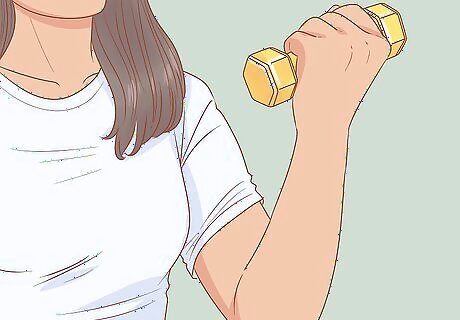
Strengthen your biceps and triceps with weight training. During a cartwheel, you must support your entire body weight using your arm muscles. If they’re not strong enough, you may have trouble completing the move. The most important muscles to strengthen are the triceps and biceps, both located in your upper arms. Do bicep curls using free weights to build up your bicep muscles. Start with smaller weights and move up as you get stronger. Learn to do a dumbbell kickback, which will help build and strengthen your tricep muscles. Make sure to do the exercise with both arms.
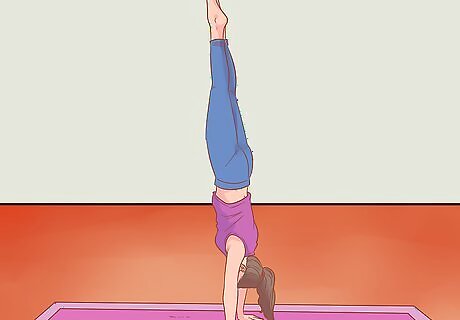
Practice a handstand to get comfortable with being upside down. If you’ve never done a handstand before, it’s best to try out this move before continuing on to the cartwheel. Or, try handstands on the wall. This will help you become familiar with the feeling of supporting your body upside down with your hands and arms. Get comfortable with safely exiting a handstand by pivoting on one arm and landing with your feet to the side. This movement will help you safely exit a cartwheel even if you’ve lost your balance. You don't need to know how to do a handstand for a cartwheel, but knowing how to do one is better than not knowing.




















Comments
0 comment